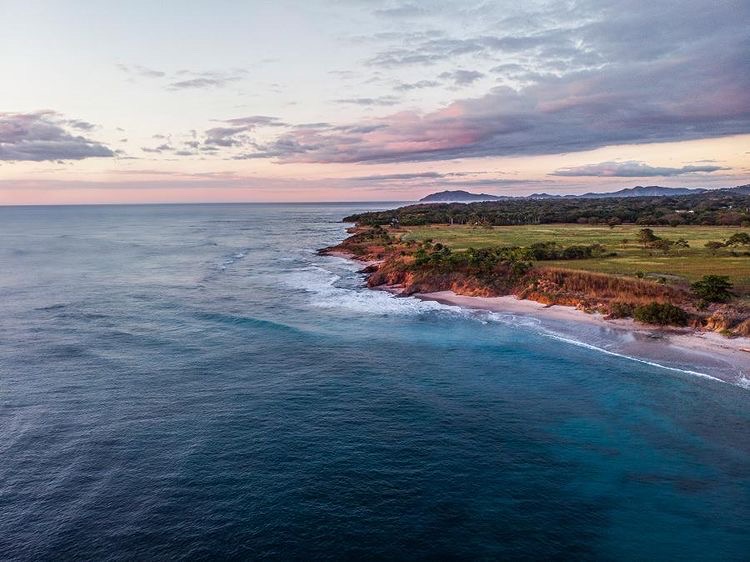The Place We Call Home
With our rapidly changing climate, people are appreciating our planet more than ever
With the ongoing changes happening to our planet as a result of climate change, people are holding on to their favorite places, hoping to preserve what they love.
Pollution can persist in many forms such as air, light, noise and water pollution. Light pollution, any excess or unnatural light, disrupts the natural patterns of wildlife which hides the natural formation of the stars.
For sophomore Alex Bradford, Lake Michigan is one of his favorite places to visit because there is no light pollution present. “I remember one night just sitting and looking at the stars,” Bradford said. “Without light pollution, you can see everything, which is really amazing.”
Lake Michigan is one of the few lakes whose surrounding area has not yet been urbanized into cities and buildings. As a kid, Bradford and his family would vacation at their house on the lake every year.
“The lake itself is really beautiful, especially when it’s calm,” Bradford said. “You can see the reflection of the trees and mountains in the water.”
Similarly to Bradford, junior Finley Craig has her own personal favorites, including the San Juan Islands in Washington. “The San Juans have unreal sunsets,” Craig said. “Sunsets are probably one of my top 10 favorite things.”
Craig also enjoys traveling to national parks. “Yosemite, Yellowstone and Crater Lake are awesome,” Craig said. “I love these places because they’re super scenic, quiet and peaceful.”
Craig runs cross country for the Varsity team, which allows her to experience peaceful outdoor spaces, even in Palo Alto. “I am able to run in a lot of fun places outdoors,” Craig said. “Especially trail running which gets you into the wild.”
In addition to running, Craig enjoys other outdoor sports such as hiking and skiing. “I love hiking near the ocean because I find [that] the views are best there,” Craig said. “I love skiing in Tahoe, but I’ve also skied in Europe which was so fun.”
Freshman Alma Bendavid also enjoys hiking. With no cell reception, it is a way for her to clear her mind. “I backpacked in Sykes Hot Springs in Big Sur with my dad,” Bendavid said. “It was 10 miles in and 10 miles out, which [gave me time to] clear my mind and get away a little bit.”
Bendavid has also traveled places out of California, including Fiji and both Bryce and Zion National Parks. “Fiji was amazing, just unreal,” Bendavid said. “Bryce and Zion look like something out of this world.”
All of these beautiful places on Earth are slowly morphing into unrecognizable areas, harmed by humans’ impact on the planet. People are starting to notice the actively changing landscapes as they explore the outdoors.
Sophomore Rae Sox-Harris has also been backpacking, starting at a young age. During recent backpacking trips, Sox-Harris noticed the decreasing biodiversity in places they visited when they were younger—places which previously housed countless species now hold far fewer species.
“The forest used to have a constant blanket of noise, and it’s just gotten quieter,” Sox-Harris said.
The issue of declining biodiversity is not confined to the surface. Species both on land and in our oceans are steadily dying and disappearing because of our harmful actions.
Scuba diving is a popular tourist activity in places such as Hawaii, Costa Rica and the Caribbean. The activity provides the perfect opportunity for those above land to dive in and observe the effects on the species below.
When visiting Costa Rica in 2019, PALY alumn Andrew Bernas and his family decided to embark on a scuba diving excursion. Keeping up with the news surrounding climate change and environmental issues, the family was well aware of the planet’s deterioration, but they were astounded by the vast levels of mortality existing in our waters.
“We went scuba diving and everything [was] just dead,” Bernas said. “It’s just really sad to see.”
After witnessing the devastating effects humans have on the planet, people often overlook the devastating effects on the place we call home. It is easy for one to turn a blind eye, but in reality society needs to confront this issue head on. Ignoring our changing planet gets significantly more difficult as climate change impairs everyday past times.
Located in California, Lake Tahoe is a popular getaway for skiers, snowboarders and vacationing families. However, the window to schedule getaways is gradually shrinking, as the level of snow decreases each year. The prolonged California drought season and overall higher temperatures play a large role in the reduction of snow
“A lot of the precipitation falls as rain instead of snow,” Bradford said. “[It] is sad to see because eventually Lake Tahoe is not going to be a place where you can enjoy the snow anymore.”
Bradford is not the only one who notices this difference. Craig and her family love their annual Tahoe trips, but with the unpredictable snow patterns, work and school, it is becoming increasingly difficult to find a window to go enjoy the snow.
“[The changing snow patterns] just throw everything off balance,” Craig said.
California is not the only state undergoing the effects of climate change. Craig’s grandparents live in West Seattle near the ocean, which is a reliable source of cooler weather, but even they have felt the rising temperatures. Both the water and weather are becoming warmer.
Equally as concerning as our West Coast is up north in the state of Alaska. Alaska is home to some of the most beautiful glaciers, which are a primary source of freshwater. These glaciers draw in people from all over, either to observe the natural beauties or to hike nearby. Unfortunately, with rising temperatures, these glaciers are beginning to melt faster than they should be.
Junior Ryan Lee visited Alaska last winter break to admire the incredible glaciers. Lee’s mom had visited when she was younger and acknowledged the difference in scenery.
“She told us about how [the glaciers] were completely different,” Lee said. “It had receded a lot.”
Similarly, Professor Richard Nevle, Deputy Director of the Earth Systems Program at Stanford University, conducted field research in Greenland and noticed obvious changes in scenery.
“I’ve been able to see the images of the areas where I worked as a young person and see the recession of those glaciers,” Nevle said.
In addition to the changing scenery, the occurrence of natural disasters has increased, wreaking
havoc and total destruction upon afflicted areas. Growing up in Houston, Texas, Nevle is accustomed to hurricane season, but as he has gone back to visit friends and family, the damages wreaked by hurricanes are far worse than in the past. One year, Nevle returned to Houston to help out a friend whose house was flooded for the fourth time.
“I was going down the street and all this furniture was soaked, and the house and all the sheetrock was ruined,” Nevle said. “It was horrible.”
Unfortunately, as more of these natural disasters occur more frequently, they begin to become a normal, inevitable part of life.
After having personal experiences with climate change and seeing first hand how it affects our planet, students have taken action to combat the effects of climate change.
Boy Scouts of America has provided those interested with countless opportunities to connect with nature, through outdoor activities and various restoration and conservation projects. The organization has also taught members how to better treat and protect the Earth.
“Scouting really emphasizes and prioritizes that idea of reverence for the environment,” Lee said.
Palo Alto Troop 57 partnered with the National Audubon Society, a non-profit organization focused on saving birds and their habitats, in an effort to bring birds back to protected wildlife areas. The troop members made birdhouses from scratch, then mounted the finished products in the National Audubon Society’s protected wildlife areas.
“I was a bit skeptical because I didn’t think birdhouses actually [did] anything,” Bernas said. “But then, I was really happy when they sent me pictures of the little birds actually hatching in [the birdhouses].”
Similarly, Palo Alto Troop 14 worked on a fence restoration project. This project formed when Troop 14 was on a camping trip, and some of the members noticed that part of the fence surrounding the campsite was damaged. Pranav Adya, a sophomore in Troop 14 was among the members on that camping trip. With the permission of the National Park Services, the troop members were able to restore the fence to protect all the animals that lived in the area.
“[Various animals] were often coming into the campsite and eating [our] food,” Adya said. “We created that fence [because eating our food causes their] teeth to rot [which] affects their digestive system and more.”
In addition to helping animals, there are organizations dedicated to helping people affected by natural disasters. Search and Rescue is exactly what it sounds like: groups of volunteers go out and search for those affected by major natural disasters, like fires and earthquakes, as well as people in distress, in attempts to rescue them and bring them to safety. For Lee, joining Search and Rescue was a way to apply the scouting skills he developed to help others. Plus, it happened to align with his interests in the outdoors and medicine.
“There’s some crazy rainstorms and windstorms that I’ve been in that are very fun, but they’re very scary sometimes,” Lee said.
Many people are taking action to help normalize discussions on important environmental issues. One instance being that Nevle partnered up with his friend, poet Steven Nightingale, to write the book, “The Paradise Notebooks.” The book features several essays and some of Nightingale’s poems. While the book is not yet published, Nevle hopes the book will offer a way for readers to reconnect with nature and realize the importance of taking action to help our planet.
“When we think about what motivates environmental ethos, or a kinship of the natural world, what we need is environmental action,” Nevle said. “We need people devoted on both the federal and international level, but also the more intimate level in our backyards and schools.”
Many students have focused on taking action in their high schools and local communities, often by educating others on environmental issues. Junior Jade Minskoff co-founded the club Project Eco with some of her friends to provide a space for discussion of environmental issues.
“There’s a domino effect of [spreading awareness],” Minskoff said. “The more awareness [there is], the more people will believe in [environmental issues].”
In addition to Project Eco, there are many other environmentally conscious clubs at PALY. Adya combined his love for photography and nature to found the Nature Observation and Photography Club. The club’s major focus is helping its members find the balance between taking the perfect shot and also respecting nature.
The club took a trip up to Point Reyes to photograph the endangered Northern Spotted Owl. The members practiced keeping their distance while taking their photographs. Photographers have given up perfect shots in efforts to preserve natural ecosystems.
“We have made sacrifices,” Adya said. “It’s extremely important if you want the last few ecosystems to still thrive.”
Photography is a perfect way for students to get involved in environmental activism because students have free reign over what they choose to photograph and emphasize. For Adya, posting his photography on social media is a way to initiate conversations about the wildlife he photographs.
“I talk about what [people] can do to avoid killing them [animals] because that’s the real issue,” Adya said. “A lot of the species I photograph are actually endangered.”
Likewise, Bernas enjoys taking photos on his outdoor excursions. Photography serves as a nice distraction from the stresses of everyday life, but more importantly, Bernas hopes to capture the natural wonders on our planet.
“My photography could potentially help because [I show] the beauty of planet Earth,” Bernas said. “It helps incentivize people [to] take action to protect those certain areas.”
Though many people are aware of climate change and the consequences of it, not many know how to make a difference. To protect the planet, the first step is to be conscious of your lifestyle and how your actions affect the environment.
“Just being aware, knowing what’s going on, and supporting people who believe in climate change [is important],” Bradford said.
It is important to spread awareness about climate change as well. The more people are conscious about their actions, the more protected the environment will be. UCSC Earth Sciences Professor Garry Griggs believes teaching about climate change and the effects it has on Earth will change some students’ perspective.
“If I influence more people, [at least] 250 or 300 students, hopefully they [will] leave with a different feeling about their footprint on the planet than they did before they took [my] class,” Griggs said.
Every person has the power to actively change their lifestyle, influence others’ lifestyles and fight for change through their government and supporting Earth-conscious companies which is something AP Environmental Science teacher Alicia Szebert agrees with as well.
“People are the ones that are making the decisions, affecting the environment, voting and deciding what to buy, where to go, what companies to support and what to ask their governments,” Szebert said.
It’s important to change peoples’ attitudes towards climate change by looking at data showing the effects of it and help others be more conscious of their lifestyle.
“If everyone was like ‘Oh, who cares if the climate gets hotter and everything dies,’ that’s going to be a very different world than one where people [think], ‘This matters, we should make changes,’” Szebert said.
Besides raising awareness and being conscious of your own lifestyle, take action by reaching people who can have larger effects and changes.
“There’s one simple thing that everybody can do and it doesn’t cost you anything,” Griggs said. “When you’re 18, and from then on for the rest of your life, you can vote and those people [you vote for] have a huge impact on our budget, our energy and our lifestyles.”
Another way to take action is by getting involved with politics and starting activist groups and clubs focusing on the environment.
“[A way to help with the environment is] getting involved with a campaign for someone who’s running on a pro environmental platform,” Nevle said. “[Become] a part of an environmental group on campus encouraging [food services] to provide alternatives that are [environmentally conscious].”
One action everyone has taken in California is water rationing. Due to the extreme droughts, residents of the state cut back their use of water through watering plants less, taking shorter showers and turning off faucets whenever possible.
“The idea of rationing water is something we never did before,” Griggs said. “But if it doesn’t snow and [the snow] doesn’t melt, it’s not like somebody’s hoarding water [from us], there just isn’t any to give.”
California’s economy is heavily dependent on the crops grown, making water supply a crucial resource in the state. There have been solutions proposed to help with this problem but it is hard to actually implement them. Converting salt water into usable water is one solution that’s been proposed to help with the depleting water supply and is a process called “desalination”.
“There are ways we can dissolve sea water, but every time somebody comes up with a new plan, there [are] people who oppose it because it takes too much energy and it costs too much,” Griggs said. “There are options, [so] we’re not going to all go thirsty, but we’ve got to plan ahead a little bit.”
Climate change is an issue that will continue to heavily affect our lives, as well as future generations, if it is not addressed.
“Future generations need to have natural spaces that they can enjoy,” Bradford said. “A lot of cities…have parks to protect places, and we’ve got all the great national parks, but those should stay protected, so people can enjoy the beauty for centuries.”
If the issue of climate change is ignored, eventually, the planet will reach a point of no return. One thing that needs to be focused on is the preservation of biodiversity—once all the forests are burned down, coral reefs killed off and more organisms become extinct, the effects cannot be reversed.
“Even if we right some wrongs or we have new advancements in technology and medicine, short of genetically recreating some of these extinct organisms, we can’t really undo organism extinction,” Szebert said.
In order to continue maintaining our current lifestyles, people have to understand that everything we use comes from the environment, so it has to be protected.
“If the environment goes down in flames, our way of life will not survive,” Szebert said.
Greenhouse gasses such as carbon dioxide and methane are a driving force of climate change. To reduce the effects of climate change, the amount of greenhouse emissions must be drastically decreased.
“The more carbon dioxide [that] goes into the atmosphere makes it warmer,” Griggs said. “Plants and animals have certain temperature ranges that [they] live within, and we’re seeing plants and animals dying out.”
Besides affecting life on land, greenhouse gasses and climate change also impact marine life.
“The more [carbon dioxide] that gets into the atmosphere, the more that gets dissolved into the oceans,” Griggs said. “[The] carbon dioxide reacts with water to produce a weak acid, so the oceans are slowly getting more acidic.
It is evident that changes need to start being made in individuals’ lifestyles, as well as policies and laws. Though making changes in people’s lives is difficult, it is needed.
“It is really just a matter of will and people willing to take action and enact change even though there might be sacrifices for themselves and for others,” Lee said.
As the effects of climate change are becoming more visible, attention must be brought to the issue to protect Earth and its natural wonders and we need to work together to combat this issue.
“I think that any kind of work that you can do in your community is really empowering,” Nevle said. “It makes you realize you’re less alone in this work.”

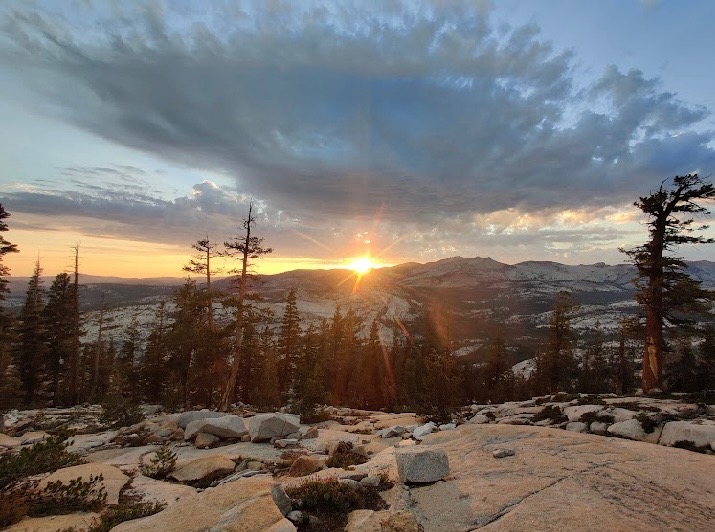
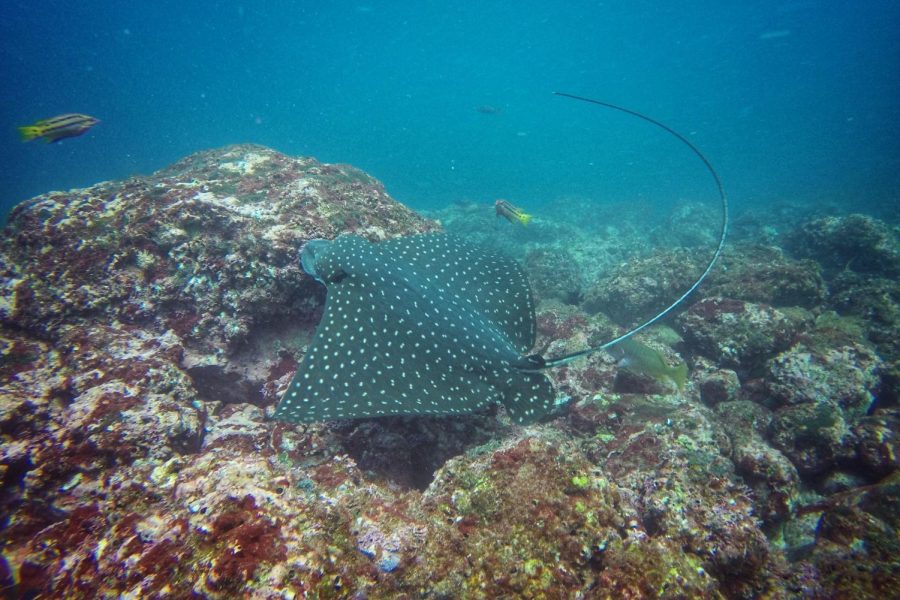



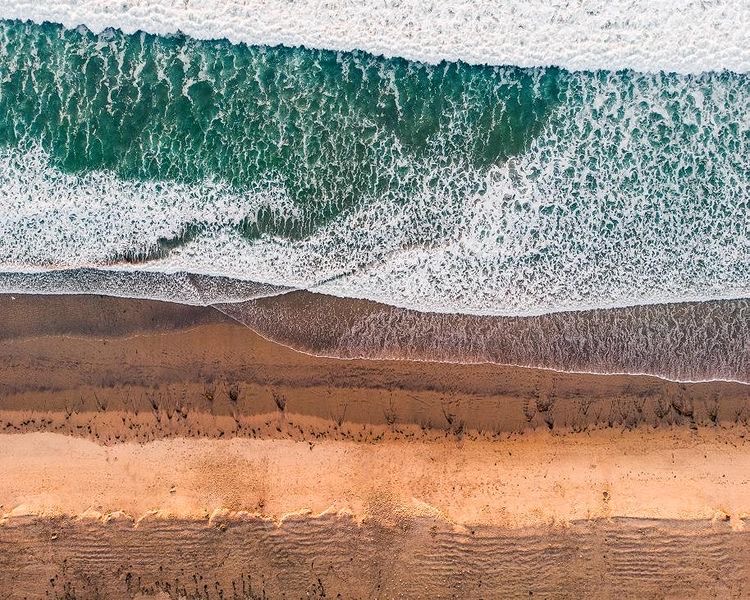

Featured Image by Ryan Lee
Print Issue
Please click on the three vertical dots on the top right-hand corner, then select “Two page view.”

2021-2022 - Staff Writer
2022-2023 - Online-Editor-In-Chief
I joined C Mag because I love art and music. I love C Mag's creative freedom. We get...
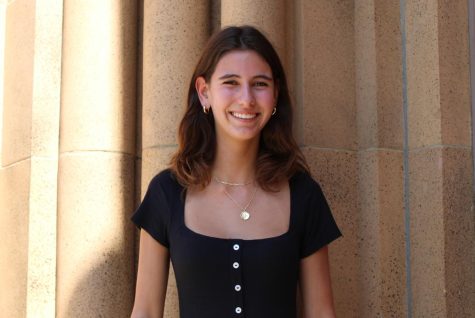
2021-2022 - Staff Writer
2022-2023 - Managing Editor
I joined C Mag because it seems like an amazing opportunity to be able to be creative and write...

2021-2022 - Staff Writer
2022-2023 - Editor-In-Chief
I joined C Mag because I really enjoy design and arts, and the creativity it comes with it....


